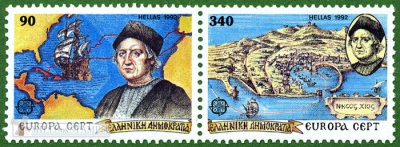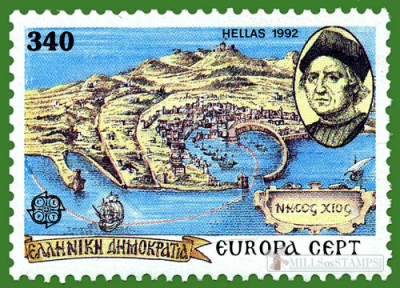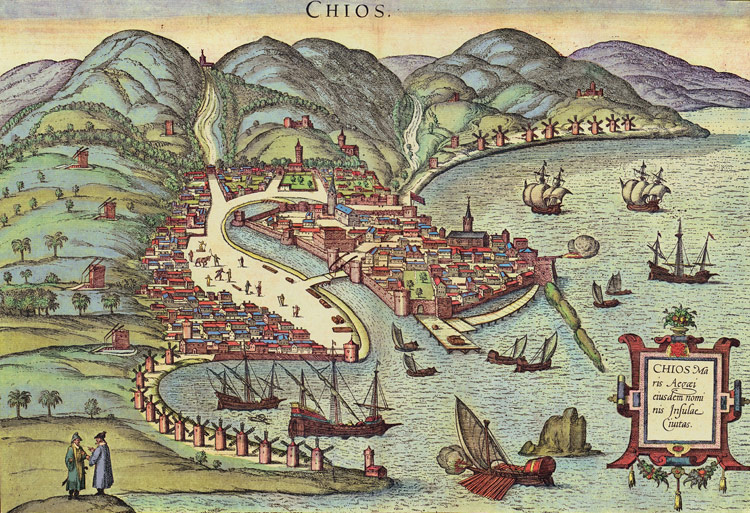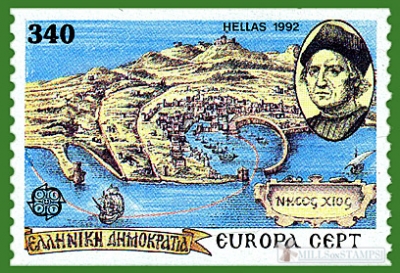-


Number by catalogue: Michel: 1803A Yvert: 1785 Scott: 1739
Perforation type: 13 ¾x12 ¼
Subject:
340 drachmas. The XV century map** of Chios Island*
Additional:
*Chios (Greek: Χίος, alternative transliterations Khíos and Híos) is the fifth largest of the Greek islands, situated in the Aegean Sea seven kilometres (five miles) off the Asia Minor coast. The island is noted for its strong merchant shipping community, its unique mastic gum and its medieval villages. The eleventh century monastery of “Nea Moni”, a UNESCO World Heritage Site, is located on the island.
Additionally, "Chios" is the name of the island's main town and administrative centre, although it is often referred to locally as Chora (Χώρα—literally meaning "Country" but is often the name given to the settlement at the highest point of a Greek island). Administratively, the island forms a separate prefecture (nomós- νομός) within the North Aegean Periphery.
Some claim Chios is Christopher Columbus's birthplace. Columbus himself said he was from the Republic of Genoa, which included the island of Chios at the time. Columbus was friendly with a number of Chian Genoese families, referenced Chios in his writings and used the Greek language for some of his notes. 'Columbus' remains a common surname on Chios.
**For a long time a windmills created special originality of the main city of island, Chios. For example see the ancient engraving. Here one of the most known and qualitative engravings of Chios. Authors: Braun and Hogenberg, 1588.

-


Number by catalogue: Michel: MH15 Yvert: C1786 Scott: 1739c
Perforation type: 12 ¼x12 ¼
Subject:
The booklet contains of two each stamps of a set. Stamps completely repeat design of the stamps which have issued in sheets. Unique difference - absence of horizontal perforation.
-

Number by catalogue: Michel: 1803C Yvert: 1787 Scott: 1739b
Perforation type: -1x12 ¼
Subject:
Europa CEPT'92. 500th Anniversary of Discovery of America
Greece 1992.05.22
In issue: Stamp(s): 2 Booklet(s): 1